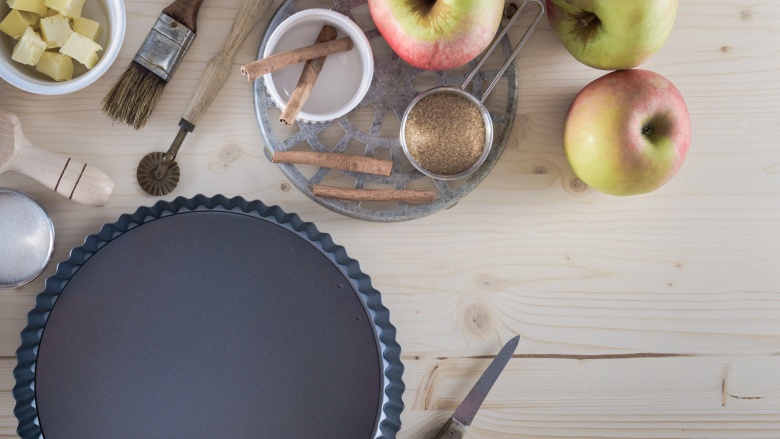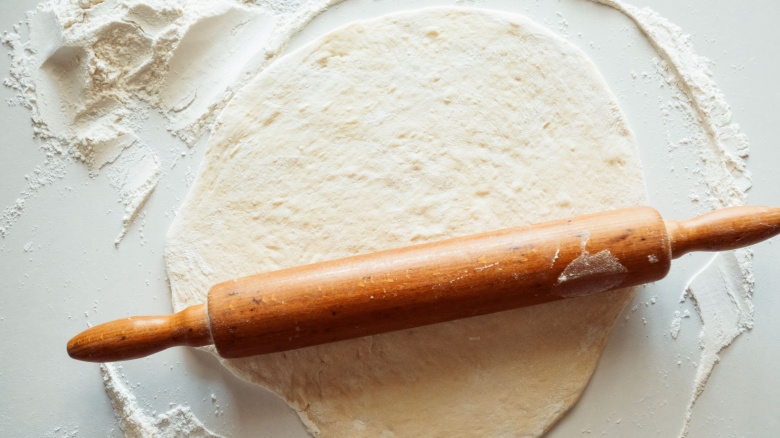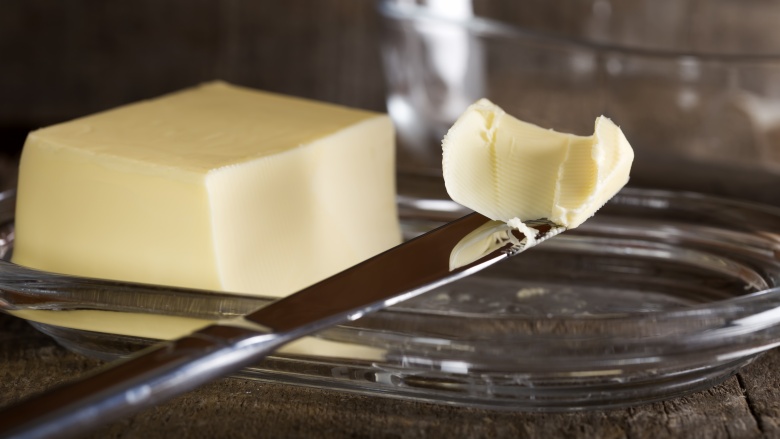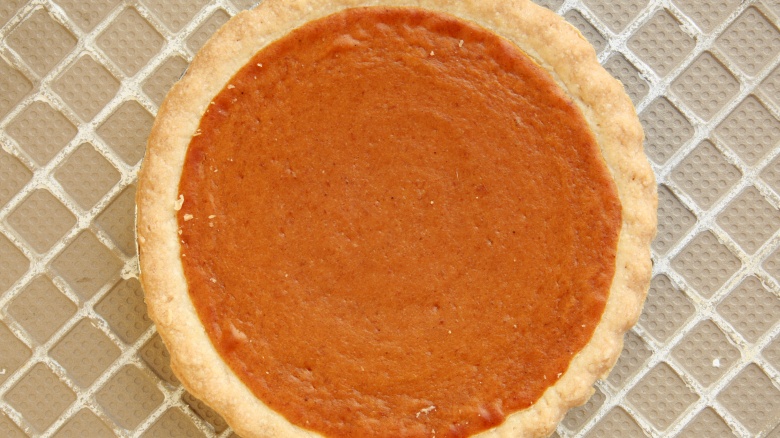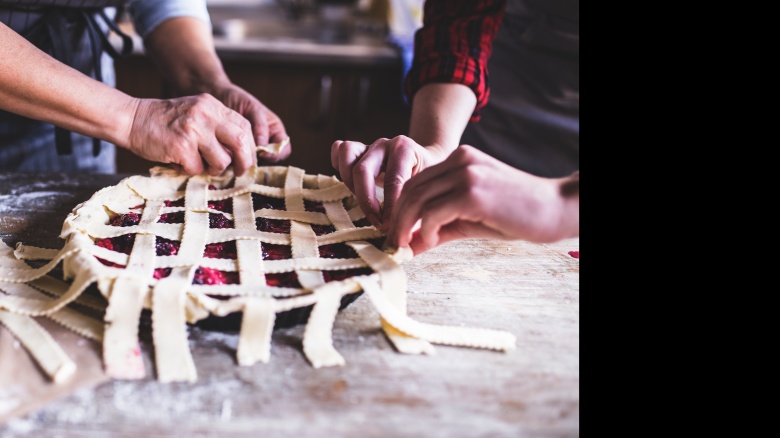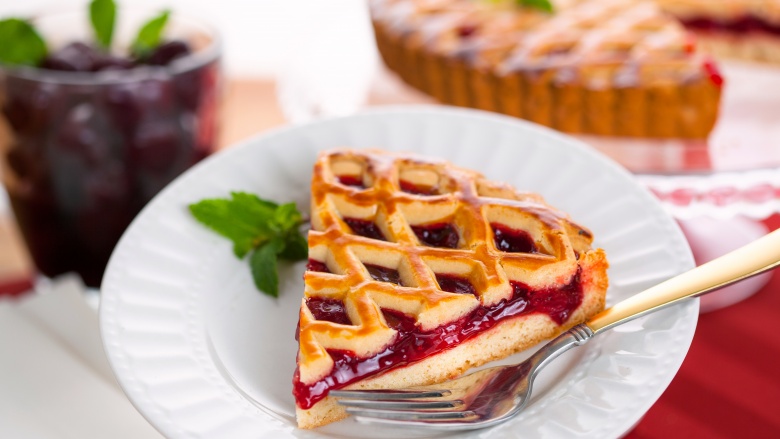Secrets To The Perfect Pie Crust
If your pie is so bad, your own family invites you NOT to bring any for Thanksgiving, chances are they didn't like the crust. But no matter how many times you may have tried, and failed, to make perfect pie dough, don't give up hope. Achieving pie crust Nirvana is within reach, if you use some of the secrets pastry chefs and great home bakers rely on for their fabulous crusts.
Use the right ingredients
Chefs have a saying about the quality of ingredients in any dish: "garbage in, garbage out." This sums up the first big secret to perfect pie crust: never stint on the quality, or type of ingredients. With just four simple ingredients in your recipe (flour, ice-cold fat, ice-cold water, and salt), substituting one type of flour or fat for another for convenience's sake, or to save a few pennies, will yield an inferior pie crust.
Don't skimp on the fat
You can't get a perfect crust without the right fat in the dough. Yes, you can achieve tender, flaky dough using lard (made from pork, and which can be used for sweet and savory pies) and vegetable shortening, and there are terrific doughs that use both fats (and sometimes sugar), but nothing compares to the flavor and texture of dough made entirely with unsalted butter. During baking, butter releases rich butter flavors and hints of toast that are irresistible. Butter is essential in creating a tender, flaky crust that melts in your mouth.
Careful when working with butter
While we certainly love the taste and texture of an all-butter crust, it's more difficult to work with during mixing, handling, and baking. The butter needs to be cold at all times, because the high fat content and low melt point make it susceptible to over-mixing and toughness. Time, temperature, and touch are the three enemies of fat such as butter. From mixing to handling, it's possible for the room temperature to warm the dough—the warmth of your hands can also do this—which releases more gluten, which in turn results in toughness. The secret is to always keep the butter ice cold, and work both quickly and gently.
The softer, the better
An angel-soft tender crust is what differentiates ho-hum pie from perfect pie, and tenderness depends on how the flour and fat are mixed and how much gluten is developed. Gluten is the protein in flour that makes the dough durable and helps develop flakiness, but too much gluten or handling can release excess gluten and toughen the dough. Most recipes call for all-purpose flour, which makes great pie crust, though it gets tough fairly quickly. Pastry chefs often rely on pastry flour, which has less gluten, or will blend the two flours for a sturdy-yet-tender dough that won't get tough from a bit of handling.
Flaky vs. mealy pie dough
Choosing the right crust recipe is essential, because you want a recipe that matches the filling. Professional pastry chefs work with two basic types of pie dough: flaky (sometimes called pâte brisée) and mealy. The two differ from each other in the way the fat and flour are blended during mixing, which makes each ideal for certain types of filling.
Flaky dough is good for fruit pies and pies with cold fillings, like banana cream or lemon meringue. For most of us, they are the pinnacle of perfection. Achieving flakiness depends on the temperature of the fat and water, the mixing method, and the handling and baking. To make flaky pie dough, the fat is cut (gently but quickly) into the flour until the pieces of fat are the size of hazelnuts, and much of the flour is still unblended. Water is then added and the ingredients are mixed as little as possible, or just until dough is formed. After chilling and resting, the dough is rolled out, still keeping it cold, and this process creates layers of butter and flour that magically puff in the oven, creating the light flaky texture every baker seeks.
In mealy pie dough, the chill factor is still important, but this dough is mixed until almost all the flour, fat, and water is combined and the dough resembles coarse granules of cornmeal. This makes the dough sturdier for liquid fillings, like pecan or pumpkin, and prevents it from becoming soggy.
How to check for perfection
Maybe now you can head to Grandma's for Thanksgiving? Not so fast. Since we eat with our eyes first, look at your crust. Are the edges neatly and attractively done, or are they burnt or collapsed on one side? The perfect crust should be free of huge blemishes and should be appetizing shades of honey and amber—if the crust is paler, it isn't completely cooked, and anything darker is over-baked. Next, you want to check for structure. If the crust falls apart when you try to take a slice, or the bottom is soggy, you still need more practice mixing, handling, and baking the dough.
Finally, the best part: the taste test. A perfect pie crust should be so tender and flaky that it melts in your mouth, and each bite should give you a heady sensation from your perfect crust-to-filling ratio. If the crust doesn't make you want to eat the entire pie at once, it isn't perfect.

